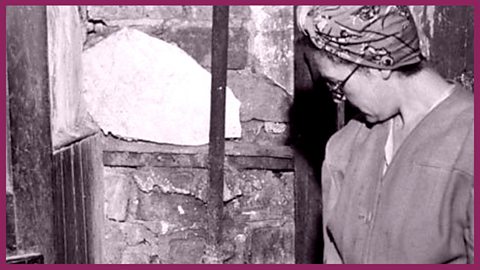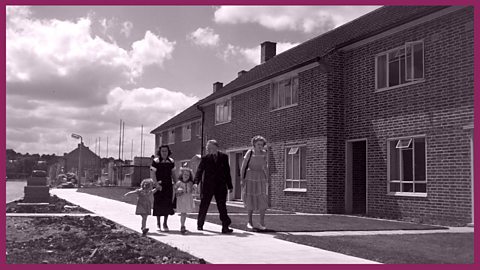INTERVIEWER: I don't think I've ever seen anything quite as bad as this. I'm standing here…looking out…out through a window… …dirt, filth of every description. How on earth do you manage to exist in this?
WOMAN: Well, there's no place else to go, and it's always been like that for some time.
INTERVIEWER: That's pretty bad, and that puddle, the smell of it…how does that come to be there?
WOMAN: I don't know if it's the drains or if it's the men using it as a lavatory instead of going into the lav.
INTERVIEWER: Well, it must be fearful just outside your window where you're preparing food.
WOMAN: Oh it is fearful. It's worse than fearful. I couldn't describe what it's like. It's getting worse. We thought a while ago it was going to be a bit better, but it's getting worse, week after week it's getting worse.
INTERVIEWER: It's not very good for the kids either.
WOMAN: No, it's not good for the children. You tell them to go away, open the window and tell them to go away, they'll get fever or something, but they don't take no notice. They're only children and…
INTERVIEWER: It's just a pity they've got to live in the midst of such filth.
WOMAN: We canna help that. It's the only place we've got to live in, by the looks of things. I don't think we'll have anywhere else.
Many residents who had endured the sort of living conditions described in these clips were moved to new housing developments, often new estates on the edge of the city. These new estates were built in a spirit of optimism. However, the reality of living on the new estates rarely lived up to the ideal and problems were quickly exposed.
The new housing, which was built quickly and cheaply, soon became run-down and the poor planning of many peripheral estates soon replicated the slum conditions of the inner-city, with damp and condensation problems leading again to health issues.In addition, the clearing of city centre slums caused the break up of close-knit communities, with extended families often finding themselves housed far away from each other and feeling isolated. Insufficient jobs materialised close to new housing developments - meaning long and expensive journeys back to the city centre - and many developments were characterised by a lack of amenities, with the absence of things to do being cited by the young as a reason for turning to vandalism.
The need to address the housing crisis was evident in the 1940s; but many would now question how successful the adopted solutions have proved.
The image shows an area of Glasgow scheduled for demolition, pictured in 1956.
Play next
1953: Slum living conditions 2. video
A woman describes her living conditions, including rats and the single, communal toilet

Living in Crawley (New Town) video
A young girl describes her feeling at moving to the new town of Crawley to live.

Report on the school meal service. video
The value to children of the school meal service - and what children would like to eat.
